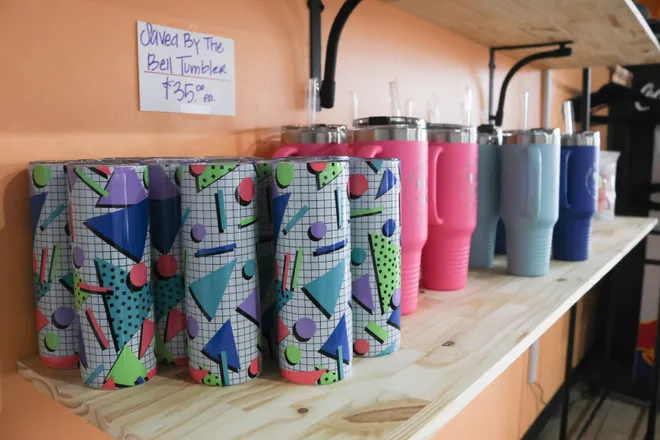Here's how much water you need to drink each day, converted for Stanley cup devotees
The Stanley cup craze is raising questions about how much water people should be drinking from the coveted cups.
Social media and limited-edition marketing helped propel the tumbler to the forefront of popular culture, becoming a mainstay on TikTok. One model, the insulated 40-oz Stanley Quencher Tumbler with a side handle and straw, was one of the most searched for items on Amazon during the holidays, according to the New York Post.
While water holders are inching closer to being the modern equivalent of the Dutch tulip, with speculators driving up prices, the main use of the cup remains holding water.
The common advice of drinking eight glasses of water a day is an easy to remember goal, though it is not a one-size-fits-all answer.
Here's what to know about how much water you should drink daily.

How much water should you drink?
"The truth is, there’s no magic formula to quantify adequate hydration," Dr. Michael Daignault wrote for USA Today.
The Mayo Clinic says that the water intake a person needs will fluctuate due to factors including exercise, environmental conditions and other health concerns.
The U.S. National Academies of Sciences, Engineering, and Medicine found that a most men should take in about 15.5 cups of fluids a day and most women should take in about 11.5 cups of fluids a day.
Water is not the only fluid that applies to those figures as 20% of daily fluid intake comes from food, according to the Mayo Clinic.
"After accommodating for fluids obtained from food, the adage of aiming to drink about six to eight glasses of water a day (1.2-1.5 liters) is generally agreed upon and seems practical," Daignault wrote.
The doctor's recommendation equates to just over one full Stanley cup of water consumed in a day.
How to know if you are hydrated?
An easy way to keep on top of hydration levels is to pay attention to the color of the urine a person produces.
If a person's urine is:
- Light brown or deep yellow they may be dehydrated
- Pale yellow and resembles lemonade they are likely properly hydrated
- Clear they may be over-hydrated
Another way to check hydration levels is to check the skin on the lower arm, according to Dr. Michael Daignault.
"Pinch the skin on the lower part of your arm; if the skin snaps back right away, you are hydrated. If the skin is slow to return to its resting state, start drinking," Daignault wrote.

Disclaimer: The copyright of this article belongs to the original author. Reposting this article is solely for the purpose of information dissemination and does not constitute any investment advice. If there is any infringement, please contact us immediately. We will make corrections or deletions as necessary. Thank you.







